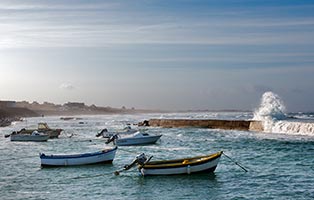Photographie, couleur et neige
La couleur présente au photographe un dilemme : le capteur d'un appareil photo « voit » la couleur selon les réglages que le photographe aura choisi, en particulier la balance des blancs. (Je ne veux pas entrer ici dans la définition physique de la température de la couleur, pourtant essentielle au photographe ; si vous voulez en savoir davantage à ce sujet l'article suivant sur wiki anglais, ou celui-ci, moins complet, sur wiki français.) L'être humain par contre utilise son cerveau, ce qui lui est souvent d'un grand secours, mais souvent aussi lui joue de très vilains tours.
Cela apparaît on ne peut plus clairement dans une photo avec de la neige sous un ciel d'un bleu éclatant. Notre cerveau sait que la neige est blanche, ou devrait l'être en tout cas, alors il la voit blanche. Mais elle ne l'est pas : elle est bleutée et le capteur de votre apparaît vous le montrera fidèlement. Juré. C'est dommage, parce que la photo semble alors un peu bizarre. Bien sûr, on peut choisir de laisser la neige comme le capteur l'a vue, cela se défend. Mais il est fréquent que le photographe corrige ce bleu spécifiquement pour la neige. Des commandes de Photoshop CC permettent de le faire en quelques secondes. Ma méthode est un peu plus longue mais plus précise.
Regardez les trois photos ci-dessous tirées du même original pris le 15 février de cette année. La première est l'original non corrigé, la deuxième la version corrigée, et la troisième compare les deux pour rendre la chose plus évidente.
N'hésitez pas à poser des questions si vous voulez en savoir davantage.
Roger Gauthier, Le photographe venu du froid
••••••••••••••••••••••••••••
Photography, Colour And Snow
Colour presents a major problem to the photographer: the sensor inside his camera "sees" colours following the settings you chose, the most important one being the white balance. (I will not explain here the concept of colour temperature, however essential it is for the photographer; for more info on that topic, I will redirect you to this good intro on wikipedia.) On the other hand, the human being uses his mind to interpret colours. This can often be very useful, but it can also play dirty tricks from time to time.
The difference between the mind and the sensor is nowhere as obvious as it is with snow under a bright blue sky. Our mind knows that snow is white, or should be white, so it sees it white. But it's not: it's rather blueish and your camera's sensor will show it to you very clearly. I swear it. It's a pity because the photograph may appear somewhat bizarre. Of course one could decide to leave the snow as it is, it sometimes gives very interesting results. But most of the time the photographer will get rid of this blue tint. Some Photoshop CC commands do exactly that in a couple of seconds. My own method takes a bit more time but it's more precise.
Look at the three photographs below. They all come from the same original shot on February 15 of this year. The first one is the unmodified original, the second one the corrected version, and the third one compares the two for more clarity.
Feel free to ask questions if you want to know more about this.
Roger Gauthier, The Photographer who came from the cold
Neige sous le soleil, original / Snow Under The Sun, Original

Neige sous le soleil,version corrigée / Snow Under The Sun, Modified

Comparaison des deux versions / Comparison Between The Two



















